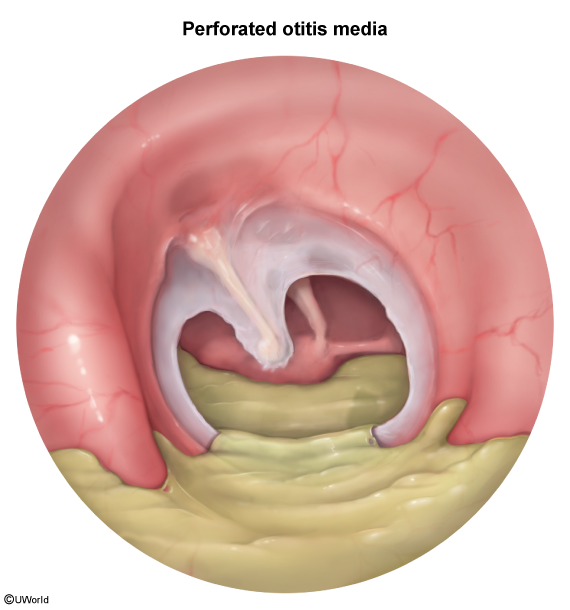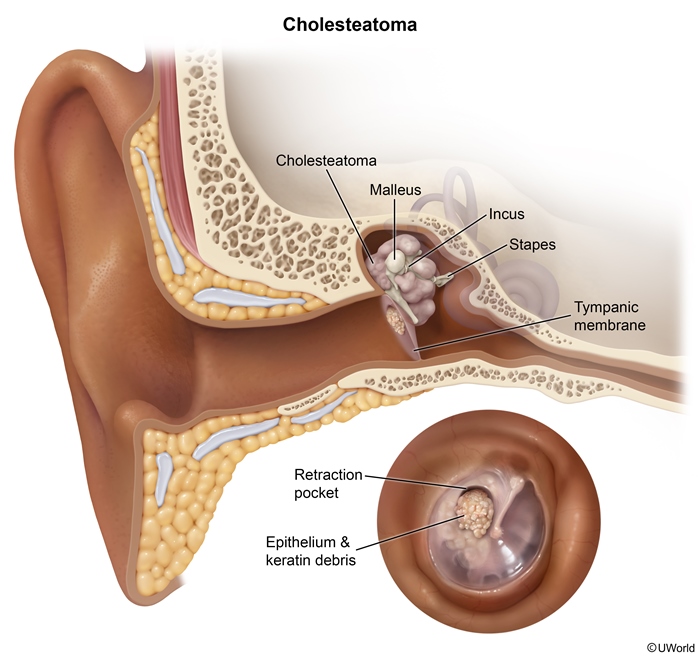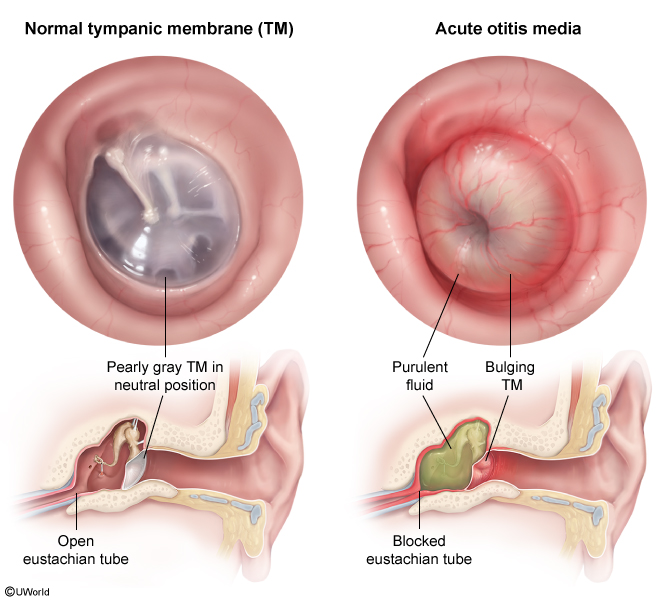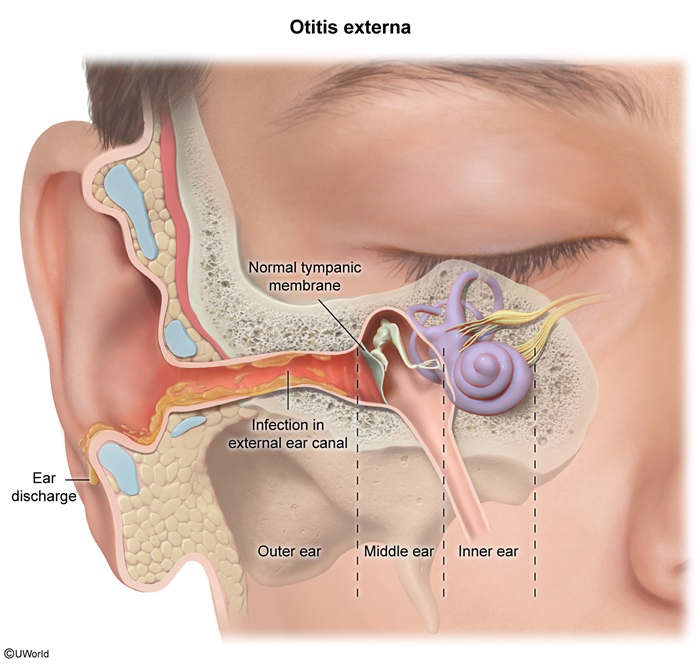Chronic Suppurative Otitis Media
Article Sections
Introduction
Chronic suppurative otitis media (CSOM) is a longstanding infection of the middle ear characterized by otorrhea (ear discharge) through a perforated tympanic membrane lasting at least 6 weeks. It most commonly affects young children (age <5) and is a leading cause of preventable hearing loss in resource-limited countries. CSOM often arises as a complication of inadequately treated acute otitis media or chronic eustachian tube dysfunction.
Pathogenesis
Chronic suppurative otitis media (CSOM) often develops as a result of recurrent or inadequately treated acute otitis media combined with underlying eustachian tube dysfunction, both of which increase the risk for tympanic membrane perforation. Tympanic membrane perforation provides a pathway for polymicrobial bacterial invasion from the external auditory canal. Therefore, the most commonly isolated pathogens are Pseudomonas aeruginosa
Continue Learning with UWorld
Get the full Chronic Suppurative Otitis Media article plus rich visuals, real-world cases, and in-depth insights from medical experts, all available through the UWorld Medical Library.
Figures



